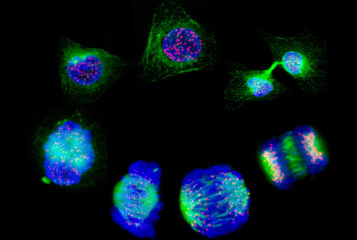Potential applications of CRISPR genome editing could be broadened by a new miniature version of an essential component.
Bioengineering researchers at Stanford University, California have created, 'CasMINI', a downsized version of the CRISPR associated protein (Cas) which is less than half the size of those currently used. The team altered an existing non-functional Cas protein, enabling it to work in mammalian cells. They believe it could make genome editing apparatus easier to deliver into human cells.
'CRISPR can be as simple as a cutter, or more advanced as a regulator, an editor, a labeller or imager. Many applications are emerging from this exciting field,' said Dr Lei Stanley Qi, assistant professor in the Stanford School of Medicine and corresponding author of the study published in Molecular Cell.
CRISPR genome editing approaches use a strand of RNA to guide Cas proteins to specific DNA sequences where they can edit them in various ways. Existing Cas proteins are often too large to be effectively delivered into cells, so the team aimed to re-engineer one which is much smaller but did not function in mammalian cells.
'We thought, okay, millions of years of evolution have not been able to turn this CRISPR system into something that functions in the human body. Can we change that in just one or two years?' said Dr Qi. 'To my knowledge, we have, for the first time, turned a non-working CRISPR into a working one.'
The novel protein was developed from Cas12f, found in a group of single-celled microbes called archaea. The scientists suspected this meant the protein was not adapted to interacting with the human genome, which is far more complex than that of archaea. The group describes how they made changes to the sequence of the protein which enabled it to effectively activate gene expression in human cells.
'At first, this system did not work at all for a year,' explained lead author Dr Xiaoshu Xu from the Stanford School of Medicine. 'But after iterations of bioengineering, we saw some engineered proteins start to turn on, like magic. It made us really appreciate the power of synthetic biology and bioengineering.'
The team hopes that the decreased size of these novel CRISPR components will make the approach easier to apply as a delivered treatment in humans. CasMINI could open possibilities of using the approach in gene therapy for conditions such as cancer and genetic diseases.
'This ability to engineer these systems has been desired in the field since the early days of CRISPR, and I feel like we did our part to move toward that reality,' said Dr Qi. 'And this engineering approach can be so broadly helpful. That's what excites me – opening the door on new possibilities.'
Sources and References
-
Engineered miniature CRISPR-Cas system for mammalian genome regulation and editing
-
Stanford researchers develop an engineered ‘mini’ CRISPR genome editing system
-
A mini-CRISPR system could be 'Swiss knife' in genome editing
-
CRISPR mini: 'Swiss army knife' for genome editing could cure hereditary diseases including Parkinson's
-
New mini-CRISPR systems could dramatically expand the scope of gene therapy





Leave a Reply
You must be logged in to post a comment.